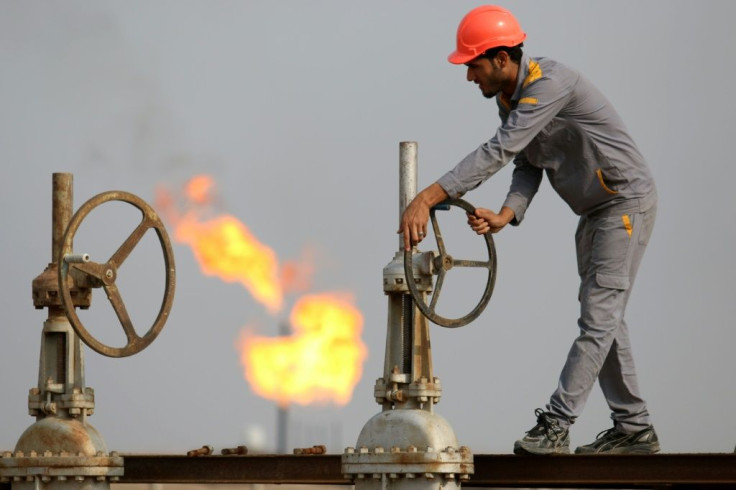Saudi Arabia, Russia Agree To Oil Output Cuts To Try To Bolster Crude Prices

KEY POINTS
- Saudis agreed to slash 4 million barrels a day from its April production levels
- Russia agreed to cut by 2 million barrels a day
- Global oil consumption is expected to plunge by as much as 30 million barrels a day this month.
Saudi Arabia and Russia agreed on Thursday to cut their oil production in order to stem the plunge in crude prices caused by cratering global demand since the coronavirus outbreak.
During a video conference that included members of the Organization of the Petroleum Exporting Countries and other oil producers, the Saudis agreed to slash 4 million barrels a day from its April production levels, while Russia agreed to cut by 2 million barrels a day.
The Wall Street Journal reported that Iraq and others have yet to agree on how much they will cut.
Bloomberg reported that OPEC-plus is expected to seek production cuts of 5 million barrels a day for Group of 20 nations at a meeting to be held on Friday.
Meanwhile, oil consumption is expected to plunge by as much as 30 million barrels a day this month.
“The supply and demand fundamentals are horrifying,” said OPEC Secretary-General Mohammed Barkindo.
He added that the demand decline in the second quarter would amount to “close to 12 million [barrels a day] and expanding,” which is “unprecedented in modern times.”
However, the oil markets have not reacted favorably to the decisions. As of 2:45 p.m. EDT, West Texas Intermediate crude futures were down 8.45% to $22.97 per barrel, while Brent Crude was down 3.56% at $31.67.
“Maybe the market was betting on a bit more in the volume than was announced,” said Bjornar Tonhaugen, head of oil markets at consulting firm Rystad Energy. “It’s also lacking detail when it comes to the baseline level and whether the deal hinges on cooperation from other nations outside of OPEC-plus.”
Thus far, the U.S. has refused to cut its own oil production, although President Donald Trump said such reductions may happen due to falling oil demand.
“I think the [production] cuts are automatic, if you’re a believer in markets,” Trump said on Monday.
Crude futures have plummeted to their lowest levels in nearly two decades, raising fears for the jobs of millions of workers in oil producing nations.
U.S. demand has plunged to 14.4 million barrels a day, down more than 30% from pre-coronavirus levels. India, the world’s third largest oil consumer, saw its demand drop nearly 18% in March alone.
“Ultimately, the size of the demand shock is simply too large for a coordinated supply cut,” said Damien Courvalin, oil analyst at Goldman Sachs. He added the output cut may push up prices briefly but “this support will soon give way to lower prices with downside risk to our near-term WTI $20 a barrel forecast.”
The U.S. Department of Energy predicts that U.S. production will start falling soon and drop to about 11 million barrels by year-end and remain there through 2021 – or 1.8 million barrels per day below levels from the end of 2019.
© Copyright IBTimes 2024. All rights reserved.




















